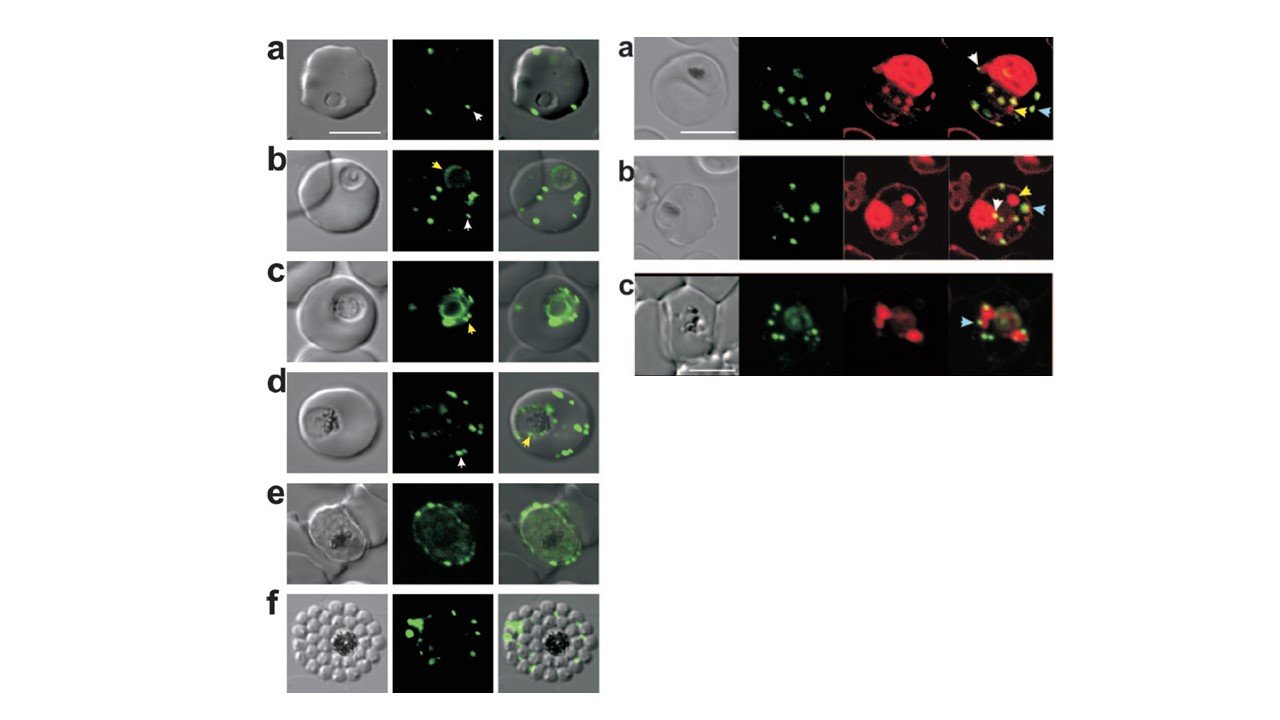Left panel: Expression of MAHRP11-249-GFP at different stages of the intraerythrocytic cycle of P. falciparum. The images represent a DIC image, the GFP fluorescence signal, and an overlay of these images. Ring and trophozoite stage parasites (a to d) show puncta of fluorescence in the RBC cytoplasm which appear to represent peripheral Maurer’s clefts (white arrows). Some cells (see, e.g., panel c) show a ring of “beads” of fluorescence around the PV. These foci may represent nascent Maurer’s clefts (yellow arrows). Mature schizont-stage parasites (e) show flattening of the peripheral Maurer’s clefts against the RBC membrane. In a burst schizont (f), the remnant Maurer’s clefts remain associated with the lysed host cell membrane. Bar, 5 mm. The intensities of the images were adjusted to optimize the fluorescence signal at each parasite stage.
Right panel:Dual labeling of MAHRP11-249-GFP transfectants with BODIPY-ceramide. (a to c) The images represent (from left to right) a DIC image, GFP fluorescence, BODIPY-ceramide fluorescence, and an overlay of the GFP (green) and BODIPY-ceramide (red) images. The parasite membranes are intensely labeled with the lipid probe. Some extensions of the PV membrane are dotted with foci of MAHRP1-GFP (white arrows). Some of the BODIPY-labeled structures (probably TVN extensions and buds) are not labeled with GFP (yellow arrows), while others (presumably Maurer’s clefts) are labeled with GFP (blue arrows). The fluorescence images in panel c correspond to an average projection generated from a series of optical slices.
Spycher C, Rug M, Klonis N, Ferguson DJ, Cowman AF, Beck HP, Tilley L. Genesis of and trafficking to the Maurer's clefts of Plasmodium falciparum-infected erythrocytes. Mol Cell Biol. 2006 26(11):4074-85.
